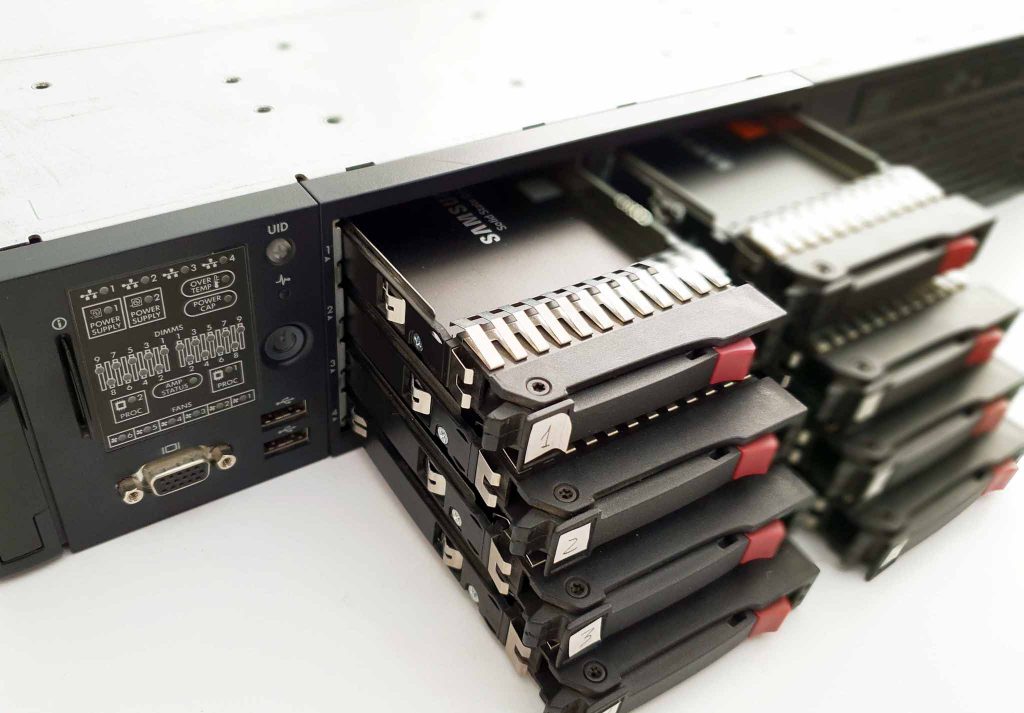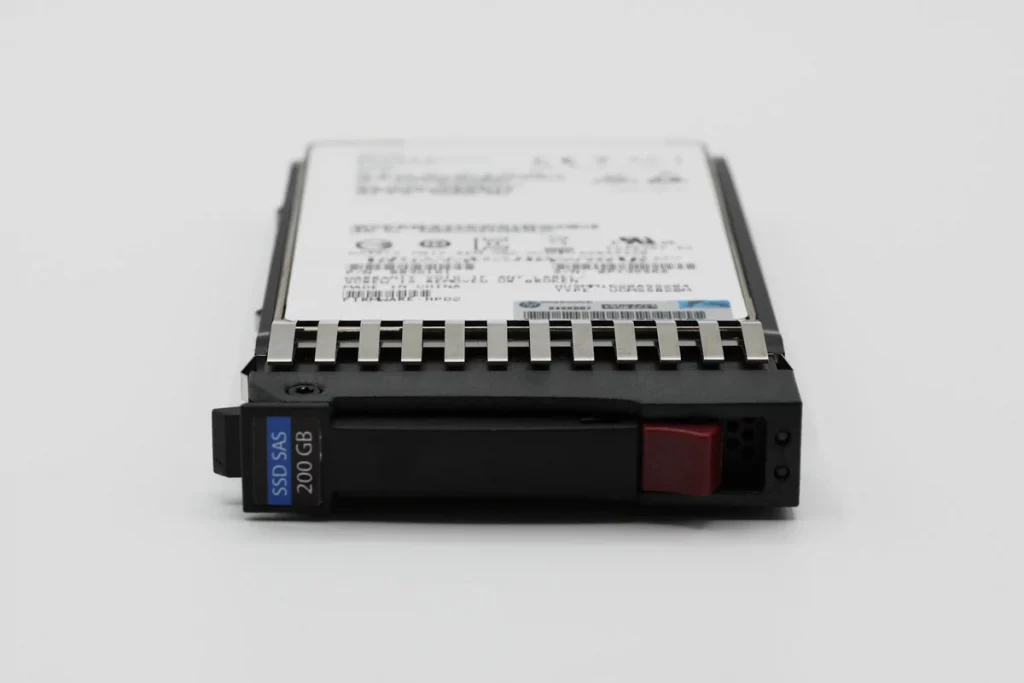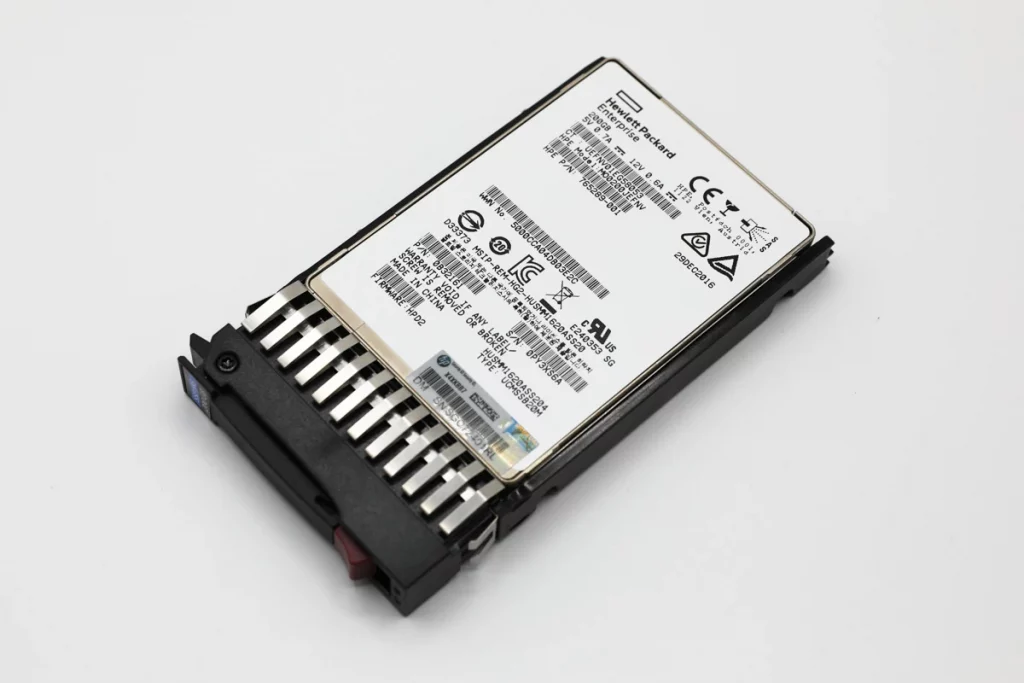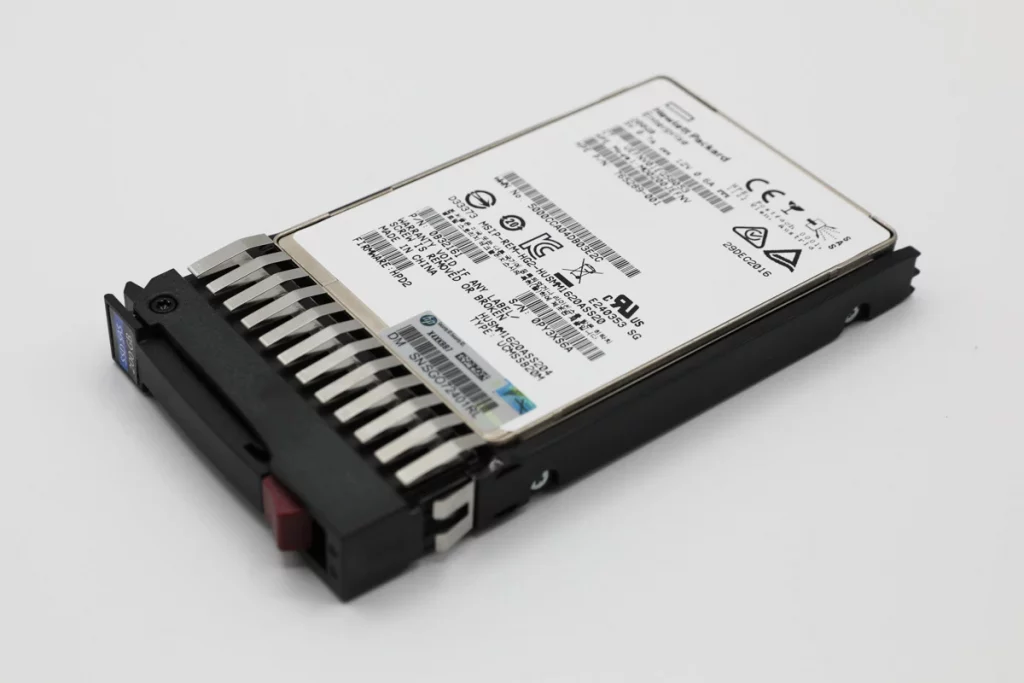A Redundant Array of Independent Disks is a trustworthy data storage system that provides users with high storage capacity and increased performance. RAIDs are usually used when storing large amounts of data is required. There are various RAID levels designed to serve users with different purposes. Diverse RAID functions are available based on its infrastructure. The system runs on several drives, providing redundancy and fault tolerance.
Traditionally, RAID arrays use HDDs as the main component of their system. Nowadays, solid-state drives take over hard disk drives. Hence, replacing HDDs with SSDs in Redundant Arrays of Independent Disks becomes an option.
Importance of RAID System in IT Departments
IT departments utilize RAIDs to strengthen data security and reliability. By distributing data across multiple disks, RAIDs provide redundancy. It means that if one disk fails, data can still be retrieved from the remaining disks, reducing the risk of data loss. This redundancy is particularly vital when data integrity is critical, such as financial institutions and healthcare organizations. It ensures uninterrupted access to paramount information and minimizes expensive downtime.
Another influential reason for IT departments to implement RAIDs is performance optimization. Different RAID configurations offer variable levels of performance improvement. For example, RAID 0 striping enhances read and write speeds by spreading data across multiple disks, while RAID 5 and RAID 10 provide a balance between performance and redundancy. This adaptability authorizes IT professionals to tailor their storage solutions to complete the precise needs of their applications, ensuring that systems run smoothly and efficiently.
RAIDs simplify data management for IT departments. With RAID controllers and software, managing data across multiple disks becomes more effortless.

Moreover, RAIDs offer scalability by allowing additional disks to seamlessly integrate into existing arrays. SSDs, with their smaller physical footprint and reduced power consumption, make an excellent choice for scaling up RAID arrays.
The combination of SSDs and RAID provides improved performance and more prominent efficiency, making it a preferred choice for handling data-intensive applications and ensuring quick access to required information.
This cost-effective scalability ensures that IT departments can accommodate growing data storage prerequisites without significant disruptions or costly infrastructure changes. It offers flexibility, which is paramount in today’s IT landscape.
SSD RAID vs HDD RAID
Hard disk drives and solid-state drives have different data storage systems. Therefore, each of these devices has its advantages for users. The same goes when HDDs and SSDs are used in RAID arrays.
HDD and SSD RAID arrays provide users with different benefits and functions. Hence, when choosing one of these media, it is critical to prioritize your objectives.
Performance
Considering both of these storage devices outside the RAID system, we state that SSD provides a higher level of performance than HDD. The same applies to these media in RAID; SSDs are faster due to their structure.
Cost
Because of its complicated structure and higher efficiency, an SSD is more expensive. Considering that hard disk drives provide higher storage capacity for the user, the SSD cost is considered a significant disadvantage.

However, when reviewing maintenance costs, SSDs are more power efficient, which lowers the cost. HDDs require a lot of energy for their moving parts, which results in higher maintenance costs.
Reliability
Solid-state drives have a reliable storage system and face data loss less often than hard disk drives. SSDs are more resistant to physical shocks and vibrations, making them ideal for laptops or other portable devices. This is because SSDs do not have any moving parts, unlike HDDs which can be easily damaged by drops or impact. Additionally, the lack of moving parts in SSDs also means they produce less heat, reducing the risk of overheating and potential data loss.
Speed
SSDs offer significantly faster boot and load times compared to HDDs. This is due to their lack of moving parts and using flash memory instead of magnetic disks. With an SSD, there is virtually no wait time for the drive to spin up and locate data, resulting in a seamless user experience.
RAID with SSD
While SSDs offer numerous benefits, they also come with certain limitations. One such drawback is their finite number of read/write cycles, which impacts their data writing capability. As a result, it’s crucial to routinely monitor the health of a solid-state drive to anticipate potential issues.
Consequently, when a user seeks a dependable and swift storage solution, opting for an SSD-based RAID system is often the preferred choice. However, if the primary requirement is to handle large volumes of data, then an HDD RAID configuration might be a more fitting option. This way, users can strike a balance between performance and data processing capacity when utilizing RAID with SSDs.
RAID with SSDs and HDDs Combined - What are the Risks?
There is also an option of combining HDDs and SSDs inside your RAID. However, it is not only complicated but also risky. There are various reasons not to use this method on your array if you want to protect data from any issues.
Hardware Issues
As we mentioned, HDDs have a more fragile data storage system than SSDs. Hence, when some hard disk issue or drive failure occurs, it will affect not only its performance but compromise the performance of SSDs and the RAID itself.
Maintenance Difference
There is a significant difference between SSDs and HDDs, so these devices need a unique approach. Supporting both of them in an array can be time-consuming and costly. Thus, we recommend not combining different kinds of drives.
Inefficient Work
When combining HDD and SSD inside your array, you should consider that the device's speed will adjust to the lowest rate. There is no point in mixing hard disk drives with solid-state drives if it does not provide a user with higher productivity.
Our company does not recommend mixing hard disk and solid-state drives within a RAID system, as it does not provide a user with any advantages. It is better to run your Redundant Array of Independent Disks based on one type of data storage device and focus on its performance.
However, data loss is always possible whether your RAID is running on HDD or SSD. Each of these systems has disadvantages that can result in file inaccessibility. In such a situation, it is better to entrust your RAID to professionals.
RAID Data Recovery from PITS Global
PITS Global Data Recovery Services provides businesses and individuals in the United States with data recovery for RAIDs regardless of their configuration. We can restore lost data from various data loss and failure scenarios, achieving the highest success rates.
RAID 0 Data Recovery
RAID 1 Data Recovery
RAID 5 Data Recovery
RAID 6 Data Recovery
RAID 10 Data Recovery
RAID 50 Data Recovery
At PITS Global Data Recovery Services, our engineers are dedicated to providing top-notch HDD and SSD RAID restoration, ensuring the highest level of safety for our clients’ data. We prioritize the recovery of our client’s information and diligently work to restore it. To maximize the success of the data recovery process, we begin with a thorough evaluation. This approach enables us to efficiently recover data from SSDs in RAID configurations, demonstrating our commitment to delivering optimal results for our clients.

Each device requires an individual approach, and we deliver it. As soon as we receive the appliance at our lab, our engineers thoroughly review it to estimate the cause of data loss and calculate the level of damage. Based on the evaluation results, they select the most suitable data recovery strategy.
Our company performs data recovery from RAID arrays in specialized facilities for the device’s safety. Working in a Class 10 ISO Certified Cleanroom protects the device from external threats and safely restores valuable data.
Start your data recovery case today with PITS Global Data Recovery Services by calling the customer service line. You can also start the process by filling out the request help form below, and we will contact you as soon as possible.
Frequently Asked Questions
What are the advantages of using SSDs for RAID?
Speed and Performance: SSDs offer significantly faster data transfer rates and lower latency compared to HDDs. By using SSDs in a RAID setup, you can achieve even higher levels of performance, as data can be distributed across multiple drives, resulting in faster read and write speeds.
Improved Reliability: SSDs have no mechanical components, making them less prone to failure caused by physical shocks, vibrations, or head crashes. This inherent reliability is advantageous when used in a RAID array, as the failure of one SSD does not necessarily lead to data loss or system downtime.
Enhanced Redundancy: RAID configurations often include redundancy features that allow for the protection of data in case of drive failures. By using SSDs, which have higher reliability compared to HDDs, the chances of multiple drive failures occurring simultaneously are reduced. This increases the overall data protection and system uptime.
Lower Power Consumption: SSDs consume less power than traditional HDDs. When used in a RAID array, this lower power consumption translates into reduced energy costs and a smaller carbon footprint. Additionally, lower power consumption means less heat generation, which can contribute to a cooler and more stable operating environment.
Compact Size and Scalability: SSDs are typically smaller and lighter than HDDs, which makes them ideal for setups where space is limited or when building compact RAID configurations. Additionally, SSDs can be easily scaled up by adding more drives, allowing for increased storage capacity and performance as needed.
Are there any limitations to using SSDs in RAID?
Cost: SSDs are generally more expensive per gigabyte compared to HDDs. This higher cost can be a limiting factor when building large-scale RAID arrays or when working with limited budgets.
Limited Lifespan: Each SSD has a finite number of write cycles, after which it may start to degrade or fail. However, modern SSDs have significantly improved lifespan compared to earlier models, and with proper usage, the lifespan is often sufficient for most scenarios.
Capacity vs. Cost Trade-off: SSDs with larger capacities tend to be more expensive. When designing a RAID array, it’s essential to find the right balance between storage capacity and cost-effectiveness based on your specific needs.
Can I mix SSDs and HDDs in a RAID configuration?
Yes, it is possible to mix SSDs and HDDs in a RAID setup, depending on the RAID level you choose. However, keep in mind that the performance and characteristics of the array will be limited by the slowest drive in the configuration. It’s recommended to consult RAID controller documentation or seek professional advice to ensure compatibility and optimal performance.
